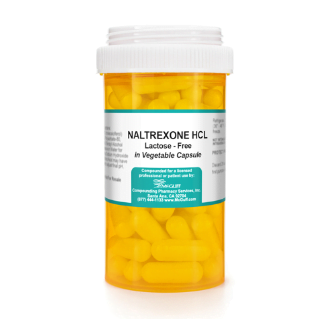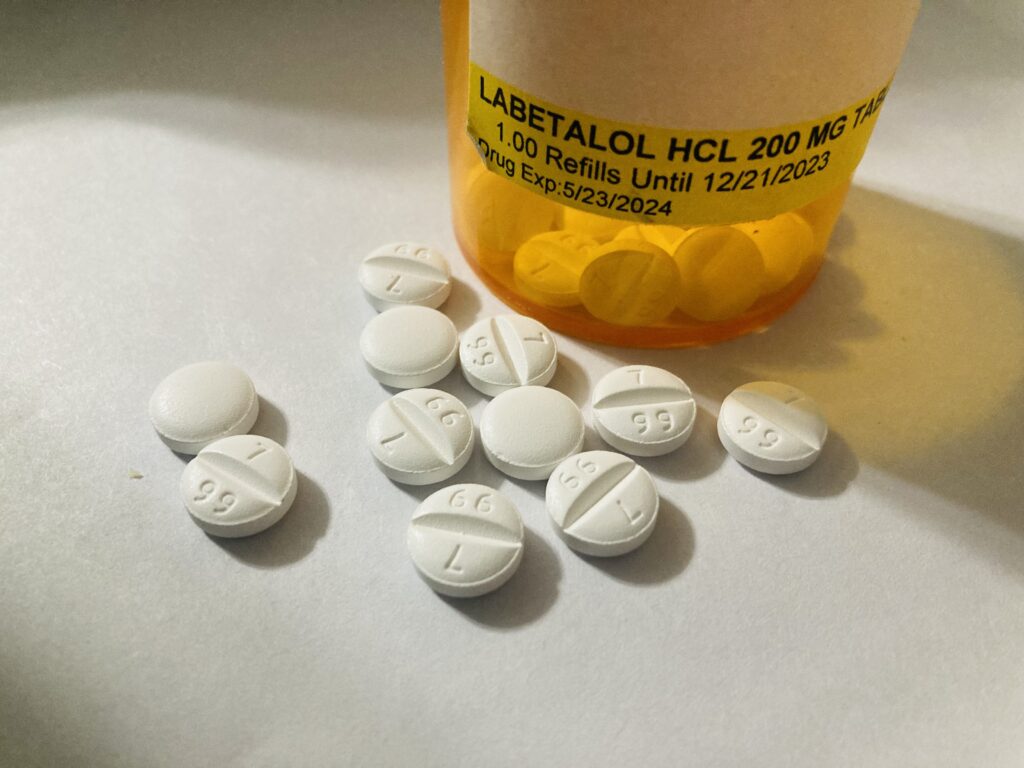Ozempic lower blood sugar, combat insulin resistance vs Naltrexone use for opioids or alcohol addiction vs Contrave a combination of naltrexone and bupropion to manage weight.
Ozempic is a Semaglutide medication, belonging to a class of drugs called GLP-1 receptor agonists, which help lower blood sugar levels by increasing insulin production and reducing the amount of glucose produced by the liver. Used to treat type 2 diabetes and recently discovered to aid in weight lost.
Naltrexone is an opioid receptor antagonist, used to help individuals overcome addiction to opioids or alcohol. It works by blocking the effects of opioids and reducing the desire for alcohol.
While Contrave is a combination medication that includes both naltrexone and bupropion. The combination of naltrexone and bupropion is thought to work on the central nervous system to reduce appetite and cravings, making it easier for individuals to control their food intake and lose weight.

Ozempic Unveiled: The Astonishing secrets Inside Your Body for Unbeatable Glucose Control
Ozempic (semaglutide) is a medication used to treat type 2 diabetes by mimicking the action of the incretin hormone glucagon-like peptide-1 (GLP-1). GLP-1 increases insulin secretion, inhibits glucagon release, and slows gastric emptying, resulting in improved blood glucose control. Semaglutide activates the GLP-1 receptor, leading to increased insulin production and reduced hepatic glucose output. Additionally, it promotes satiety, aiding in weight management.
Key detail on how Naltrexone works in the Body

Naltrexone, an FDA-approved opioid antagonist, is utilized in the treatment of alcohol use disorder and opioid dependence. By blocking the effects of opioids, it hinders opioid intoxication and mitigates the development of physiological dependence in individuals using opioids.
Naltrexone works by blocking opioid receptors in the brain, thereby reducing the rewarding effects of opioids and alcohol. Naltrexone acts as a competitive antagonist, preventing opioids or alcohol from binding to these receptors and attenuating the reinforcing effects, which can contribute to reducing cravings and relapse.
What is Contrave and how dose it works?
Contrave is a combination medication that includes naltrexone and bupropion. Bupropion, an atypical antidepressant, affects neurotransmitters in the brain, particularly norepinephrine and dopamine. It is believed to influence appetite and cravings. The addition of naltrexone in Contrave further helps with reducing the rewarding effects of food and potentially enhances weight loss.
When combining medications like Ozempic, Naltrexone, and Contrave, it’s crucial to consider potential synergistic effects and interactions. For example, the combination of Contrave’s bupropion and naltrexone components may work synergistically to address both appetite control and cravings. However, combining medications should be done under the supervision of a healthcare professional, as there may be contraindications or side effects to consider. It’s essential to tailor the treatment plan to the individual needs and health conditions of the patient. Always consult with a healthcare provider for personalized advice and guidance.

Primary differences between Ozempic and Contrave
- Purpose:
- Ozempic (Semaglutide): Ozempic is a medication used to treat type 2 diabetes. It belongs to a class of drugs called glucagon-like peptide-1 (GLP-1) receptor agonists, which help regulate blood sugar levels.
- Contrave (Naltrexone/Bupropion): Contrave is an FDA-approved prescription medication used for weight management in adults with obesity. It combines two active ingredients: naltrexone, which is used to treat alcohol and opioid dependence, and bupropion, an antidepressant and smoking cessation aid.
- Mechanism of Action:
- Ozempic: It works by mimicking the action of GLP-1, a natural hormone that helps regulate blood sugar levels by increasing insulin production and reducing glucose production by the liver.
- Contrave: The combination of naltrexone and bupropion works in the brain to reduce food cravings and increase the feeling of fullness. Naltrexone is thought to block certain receptors in the brain associated with the rewarding effects of food, while bupropion affects neurotransmitters involved in appetite and energy balance.
- Indications:
- Ozempic: Used for the treatment of type 2 diabetes mellitus to improve glycemic control in adults.
- Contrave: Indicated as an adjunct to a reduced-calorie diet and increased physical activity for chronic weight management in adults with an initial body mass index (BMI) of 30 kg/m² or greater (obese), or 27 kg/m² or greater (overweight) in the presence of at least one weight-related comorbidity.
- Side Effects:
- Ozempic: Common side effects may include nausea, vomiting, diarrhea, abdominal pain, and constipation.
- Contrave: Common side effects may include nausea, constipation, headache, vomiting, dizziness, insomnia, and increased blood pressure.
- Contraindications:
- Ozempic: Should not be used in patients with a personal or family history of medullary thyroid carcinoma or in patients with multiple endocrine neoplasia syndrome type 2.
- Contrave: Contraindicated in patients with uncontrolled hypertension, seizures, or a history of anorexia or bulimia.
- Patient Population:
- Ozempic: Primarily for individuals with type 2 diabetes.
- Contrave: Intended for individuals with obesity or overweight with weight-related comorbidities.
- Ozempic Not approved by FDA for weight management. Contrave approved by FDA for weight management.
It’s important to note that both medications require a prescription, and the decision to use one over the other should be made in consultation with a healthcare professional.
Here’s a table summarizing the differences between Ozempic and Contrave:
| Ozempic (Semaglutide) | Contrave (Naltrexone/Bupropion) |
|---|---|
| Type 2 diabetes treatment | Weight management in adults with obesity |
| GLP-1 receptor agonist, regulates blood sugar levels | Combination of naltrexone and bupropion, affects food cravings and fullness |
| Improve glycemic control in adults with type 2 diabetes | Adjunct to reduced-calorie diet and increased physical activity for weight management in adults with obesity or overweight with comorbidities |
| Nausea, vomiting, diarrhea, abdominal pain, constipation | Nausea, constipation, headache, vomiting, dizziness, insomnia, increased blood pressure |
| History of medullary thyroid carcinoma, multiple endocrine neoplasia syndrome type 2 | Uncontrolled hypertension, seizures, history of anorexia or bulimia |
| Individuals with type 2 diabetes | Individuals with obesity or overweight with weight-related comorbidities |
| Not approved by FDA for weight management | Approved by FDA for weight management |
Today’s key Treatment purposes of Ozempic vs Naltrexone vs Contrave.
Ozempic, Naltrexone, and Contrave are medications used to treat different conditions:
- Ozempic (Semaglutide):
- Use: Ozempic is primarily used to treat type 2 diabetes. It belongs to a class of medications known as glucagon-like peptide-1 (GLP-1) receptor agonists. It helps lower blood sugar levels by increasing insulin secretion and reducing glucagon production.
- Higher-dose formulation of Ozempic (2.4 mg) specifically for chronic weight management in individuals without diabetes.

2. Naltrexone:
- Use: Naltrexone is used for several purposes, and its use can depend on the formulation.
- In its oral form, naltrexone is used to treat alcohol and opioid dependence by reducing cravings and blocking the effects of opioids.
- In its extended-release injectable form (Vivitrol), naltrexone is used as part of a comprehensive treatment plan for opioid or alcohol dependence.
3. Contrave:
- Use: Contrave is a combination medication that contains bupropion and naltrexone. It is used as an adjunct to a reduced-calorie diet and increased physical activity for chronic weight management in adults with obesity or who are overweight and have weight-related medical problems.
Clear comparison of the weight loss benefits of Ozempic vs Naltrexone vs Contrave
Ozempic (semaglutide), naltrexone, and Contrave (a combination of naltrexone and bupropion) are medications that may be used in the context of weight management, but they work through different mechanisms and have distinct primary indications.
- Ozempic (Semaglutide):
- Mechanism: Ozempic is a glucagon-like peptide-1 (GLP-1) receptor agonist. It primarily works by increasing feelings of fullness and reducing appetite, leading to lower food intake.
- Weight Loss Benefits: Ozempic has demonstrated weight loss benefits in clinical trials. It is often prescribed for individuals with type 2 diabetes, but its weight loss effects can be beneficial for those without diabetes as well.
- Naltrexone:
- Mechanism: Naltrexone is an opioid receptor antagonist. It is primarily used in the treatment of alcohol use disorder and opioid dependence. It reduce Cravings.
- Weight Loss Benefits: This is achieved by suppressing food cravings and thus reducing the amount of food eaten and reduce calories intake, this effects end in weight loss.
- Contrave (Naltrexone/Bupropion):
- Mechanism: Contrave is a combination medication containing naltrexone (opioid receptor antagonist) and bupropion (an antidepressant with effects on appetite regulation and cravings).
- Weight Loss Benefits: Contrave is approved for chronic weight management in addition to a reduced-calorie diet and increased physical activity. The combined mechanism of action aims to address both appetite regulation and potential emotional eating.
Advantages of Ozempic vs Naltrexone vs contrave
Ozempic (Semaglutide):
- Advantages:
- Ozempic is a glucagon-like peptide-1 (GLP-1) receptor agonist primarily used for managing type 2 diabetes.
- It helps lower blood sugar levels by increasing insulin secretion and reducing glucagon release.
- Ozempic is associated with weight loss, making it beneficial for those with diabetes who also need to manage their weight.
- Once-weekly dosing enhances convenience and adherence for some individuals.

Naltrexone:
- Advantages:
- Naltrexone is an opioid receptor antagonist primarily used to treat alcohol and opioid dependence.
- It blocks the effects of opioids, reducing cravings and the reinforcing effects of these substances.
- Naltrexone can be administered in various forms, such as oral tablets or extended-release injectable formulations.
- It may help individuals in recovery from addiction maintain abstinence.

Contrave (Naltrexone/Bupropion):
- Advantages:
- Contrave is a combination medication that includes naltrexone (an opioid receptor antagonist) and bupropion (an antidepressant and smoking cessation aid).
- It is indicated for chronic weight management in adults with obesity or overweight with at least one weight-related comorbidity.
- Contrave works on the central nervous system to reduce appetite and increase the feeling of fullness.
- The combination of naltrexone and bupropion addresses both the neurological and behavioral aspects of weight management.

Basic Component of Contrave
Contrave is a prescription medication used for weight management that combines two active ingredients: naltrexone hydrochloride and bupropion hydrochloride. These components work together to help reduce appetite and control cravings. Here are the key components of Contrave:
- Naltrexone Hydrochloride:
- Function: Naltrexone is an opioid receptor antagonist, which means it blocks the effects of opioids in the brain. In the context of Contrave, it is believed to help reduce food cravings and the rewarding effects of food.
- Bupropion Hydrochloride:
- Function: Bupropion is an antidepressant and smoking cessation aid. Its mechanism of action involves affecting the levels of neurotransmitters like norepinephrine and dopamine in the brain. In the case of Contrave, it is thought to contribute to appetite control and reducing the desire to overeat.
The combination of naltrexone and bupropion is intended to target different pathways in the brain related to food intake, cravings, and reward.
Step by step Explanation on how Contrave make you lose weight
- Appetite Suppression: Bupropion, one of the components of Contrave, is thought to influence neurotransmitters like norepinephrine and dopamine in the brain. These neurotransmitters play a role in regulating mood and appetite. By affecting these chemicals, Contrave may help reduce appetite and cravings, making it easier for individuals to consume fewer calories and control their food intake.
- Impact on Reward Pathways: Naltrexone, the other active ingredient, is an opioid receptor antagonist. It blocks the effects of opioids in the brain, which could include the rewarding effects of food. By blunting the reward response, Contrave may help reduce the pleasure associated with eating, potentially leading to decreased food consumption.
- Metabolic Effects: Bupropion, in addition to its effects on neurotransmitters, has been shown to have some impact on metabolic rate. It may increase energy expenditure, which can contribute to weight loss by burning more calories.
- Increased Energy Expenditure: Bupropion is thought to increase energy expenditure, which means that the body may burn more calories. This effect could contribute to weight loss over time.
- Balancing Neurotransmitters: Bupropion’s impact on neurotransmitters may also help improve mood and reduce emotional eating, promoting more sustainable weight loss.
It’s important to note that Contrave is not a stand-alone solution for weight loss. It is typically prescribed as part of a comprehensive weight management program that includes a reduced-calorie diet and increased physical activity. The medication is generally recommended for individuals with a body mass index (BMI) of 30 or higher or those with a BMI of 27 or higher who have obesity-related comorbidities.
Before starting Contrave or any weight loss medication, individuals should consult with their healthcare provider to assess its suitability based on their medical history and overall health. Additionally, regular monitoring and follow-up with a healthcare professional are essential during the course of Contrave treatment.
Which is better Ozempic or Contrave
The choice between Ozempic and Contrave depends on the specific medical condition being addressed and individual goals.
If the primary concern is managing type 2 diabetes and controlling blood sugar levels and managing weight, Ozempic may be more appropriate.
In addition to its blood sugar-lowering effects, Ozempic has been shown to have cardiovascular benefits, in this case Ozempic maybe more appropriate.
Contrave maybe more appropriate for individuals with gastrointestinal problems such as constipation.
Ozempic/Semaglutide is not recommended for individuals with a personal or family history of medullary thyroid carcinoma or those with the rare condition known as Multiple Endocrine Neoplasia syndrome type 2 (MEN 2). In this case Contrave maybe more appropriate.
Common side effects of Ozempic
- Nausea: Some people may experience mild to moderate nausea, especially when starting the medication. This side effect often improves over time.
- Vomiting: Vomiting can occur, particularly during the initial period of using Ozempic. Like nausea, this side effect may diminish with continued use.
- Diarrhea: Diarrhea is another gastrointestinal side effect that some individuals may experience.
- Abdominal pain: Pain or discomfort in the abdominal area may occur as a side effect of Ozempic.
- Constipation: In some cases, people may experience constipation as a side effect.
- Headache: Headaches can occur, but they are generally mild and temporary.
- Hypoglycemia: While Ozempic itself does not typically cause low blood sugar (hypoglycemia) when used alone, it can increase the risk when combined with other diabetes medications that lower blood sugar.
- Injection site reactions: Some individuals may experience redness, swelling, or itching at the injection site. Rotating injection sites can help minimize these reactions.
- Increased heart rate: A slight increase in heart rate has been reported by some individuals using Ozempic.
- Pancreatitis: In rare cases, GLP-1 receptor agonists like Ozempic have been associated with pancreatitis. Symptoms of pancreatitis include severe abdominal pain that may radiate to the back, nausea, and vomiting.
Warning and side effects of Contrave
Here are some common side effects
1. Nausea: This is one of the most commonly reported side effects. Taking Contrave with food may help alleviate nausea.

2. Headache: Some individuals may experience headaches while taking Contrave.

3. Constipation: This medication can lead to changes in bowel habits, including constipation.
4. Insomnia: Difficulty sleeping or insomnia has been reported by some users.
5. Dry mouth: Contrave may cause a dry mouth sensation.
6. Dizziness: Some individuals may experience dizziness, especially when standing up quickly.
7. Increased blood pressure and heart rate: Bupropion, one of the components of Contrave, can lead to increased blood pressure and heart rate.
8. Seizures: Bupropion has been associated with an increased risk of seizures. This risk may be higher at higher doses.
9. Allergic reactions: While rare, some people may experience allergic reactions such as rash, itching, swelling, severe dizziness, or difficulty breathing.
10. Mood changes: Bupropion is an antidepressant, and it may cause mood changes, including an increased risk of suicidal thoughts in some individuals.
Medications that Interacts with Contrave
1. Opioid Analgesics: Naltrexone can reduce the effectiveness of opioid medications used for pain relief, such as morphine, codeine, oxycodone, and hydrocodone.

2. Tramadol: Tramadol is a pain medication with opioid-like effects. Naltrexone can also reduce its effectiveness.

3. Other Antidepressants: Bupropion may interact with other antidepressant medications, such as selective serotonin reuptake inhibitors (SSRIs) or serotonin-norepinephrine reuptake inhibitors (SNRIs), potentially increasing the risk of serotonin syndrome.
A list of some commonly prescribed selective serotonin reuptake inhibitors (SSRIs):
- Fluoxetine (Prozac)
- Sertraline (Zoloft)
- Paroxetine (Paxil)
- Fluvoxamine (Luvox)
- Citalopram (Celexa)
- Escitalopram (Lexapro)
4. Monoamine Oxidase Inhibitors (MAOIs): Concomitant use of bupropion with MAOIs can lead to hypertensive crisis due to increased levels of norepinephrine.
5. Antipsychotic Medications: Bupropion may lower the seizure threshold, and when combined with antipsychotic medications, it can increase the risk of seizures.
6. Stimulant Medications: Combining bupropion with other stimulant medications may increase the risk of seizures or other adverse effects.
7. Antihypertensive Medications: Bupropion can increase blood pressure, so caution is advised when combining it with medications used to treat hypertension.

8. Alcohol: Naltrexone is used to treat alcohol dependence, but it may also reduce the euphoric effects of alcohol. However, it’s essential to use caution when combining alcohol with any medication.

9. Other medications: Contrave contains bupropion, which can lower the seizure threshold in some individuals, combining it with medications that also lower the seizure threshold, such as Excedrin (which contains caffeine), might theoretically increase the risk of seizures, though this risk is very low.
Excedrin contains
- (acetaminophen / aspirin / caffeine)

when bupropion is taken with Excedrin which contains caffeine can lead to an increase in blood pressure due to their effects on neurotransmitters and hormones that regulate cardiovascular function. However, the extent of this increase may vary depending on individual factors such as dosage, frequency of use, and underlying health conditions.
It’s essential for individuals taking these substances, especially those with hypertension or other cardiovascular issues, to monitor their blood pressure regularly and consult with a healthcare professional if they have concerns.
6 Important Consideration before using Contrave
- Not recommended for patients with uncontrolled hypertension.
- Individuals with seizure disorders.
- Individuals with eating disorders.
- Pregnant women.
- Discontinuing Contrave should be done under the guidance of a healthcare professional, and abrupt cessation may lead to withdrawal symptoms.
- Regular monitoring of blood pressure and other vital signs may be necessary during Contrave treatment.
Challenges and Limitations associated with each medication Ozempic vs Contrave
Ozempic (Semaglutide):
- Indication: Ozempic is specifically designed for treating type 2 diabetes, and it is not indicated for weight loss. Using it solely for weight management may not be appropriate or effective.
- Side Effects: Like any medication, Ozempic may cause side effects, including nausea, vomiting, diarrhea, and abdominal pain. Patients may find these side effects challenging to tolerate.
- Injection: Ozempic is administered via subcutaneous injection, which may be inconvenient or uncomfortable for some patients. Injection site reactions or needle anxiety can be limiting factors.
- Cost: The cost of Ozempic may be a limiting factor for some individuals, especially if insurance coverage is inadequate. Access to the medication can be a challenge for those without insurance or with high copayments.
Contrave (Naltrexone/Bupropion):
- Side Effects: Contrave is associated with side effects such as nausea, constipation, headache, insomnia, and increased blood pressure. These side effects may be challenging for some individuals, leading to discontinuation or reduced adherence.
- Drug Interactions: Both naltrexone and bupropion have interactions with other medications. Potential interactions may limit the use of Contrave in individuals taking certain drugs or with specific medical conditions.
- Psychiatric Concerns: Bupropion, one of the components of Contrave, is an antidepressant and can increase the risk of suicidal thoughts, especially in individuals with a history of depression or other psychiatric conditions.
- Limited Efficacy: While Contrave has shown effectiveness in some individuals for weight management, the degree of weight loss may vary, and not everyone responds equally. Lifestyle changes, including diet and exercise, are crucial for achieving and maintaining weight loss.
- Cost: Similar to Ozempic, the cost of Contrave may be a limiting factor for some individuals, particularly if it is not covered by insurance.
Resources
https://en.wikipedia.org/wiki/Naltrexone/bupropion
https://www.accessdata.fda.gov/drugsatfda_docs/label/2017/209637lbl.pdf









